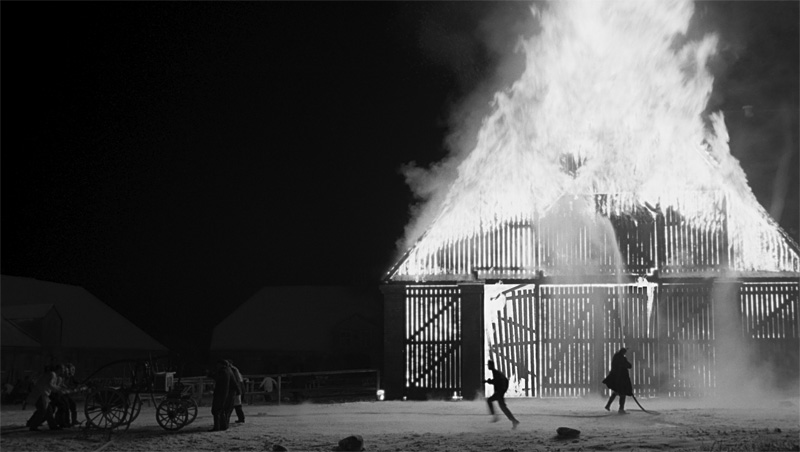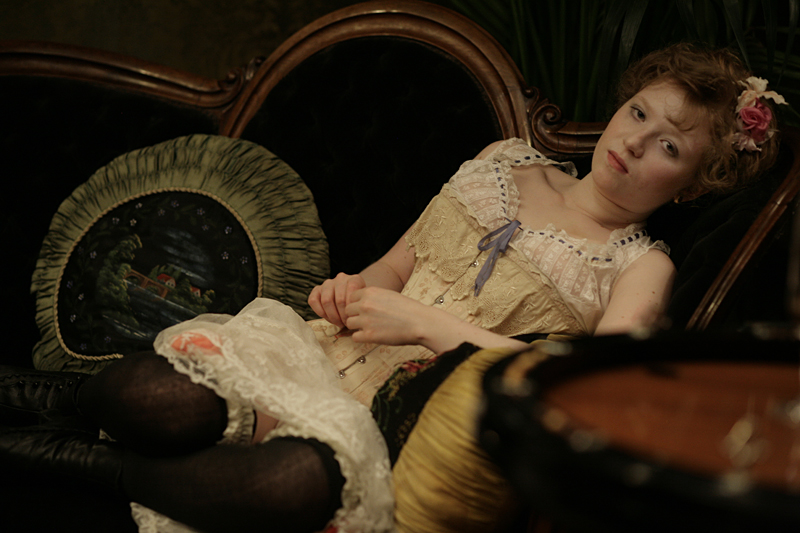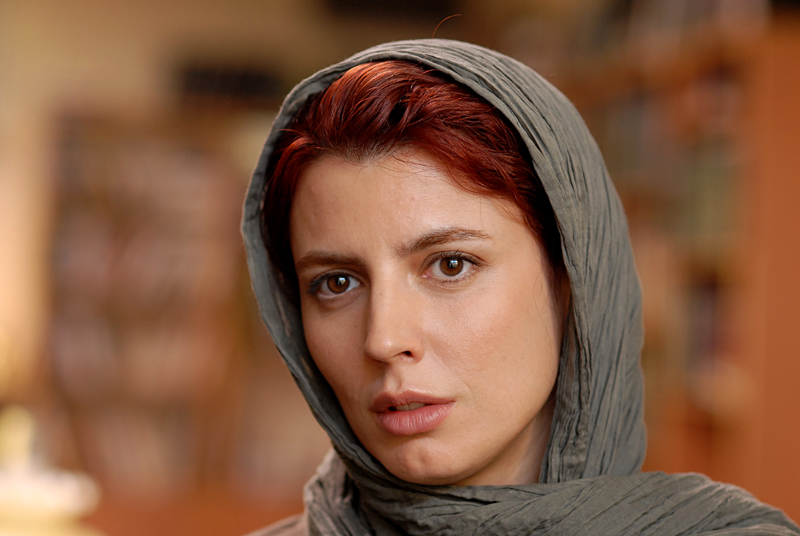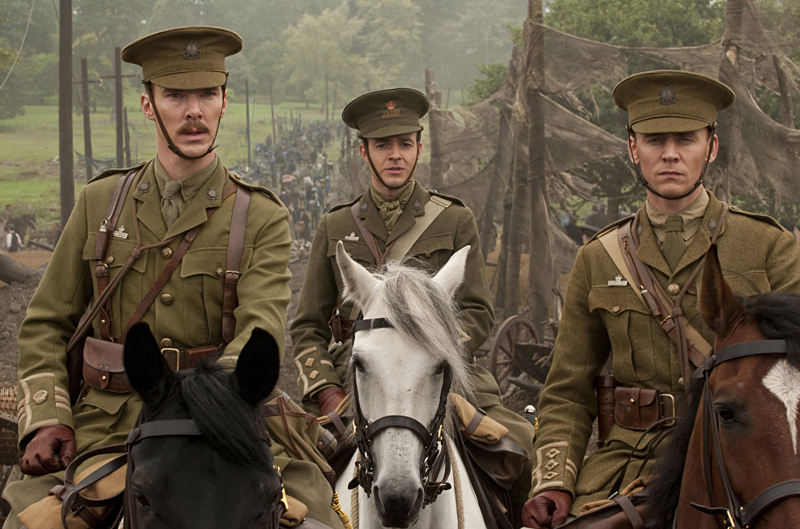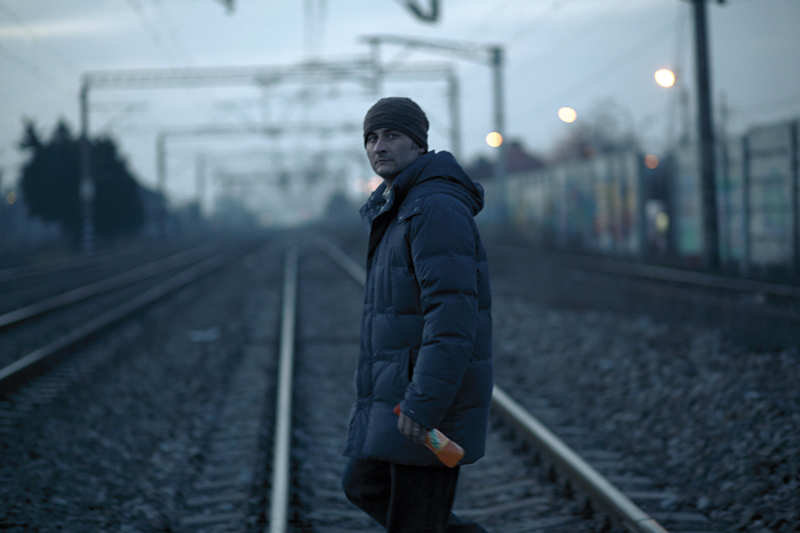The White Ribbon is Michael Haneke’s first German-language film since the original Funny Games (1997), and, addressing what used to be called “the German problem” while dodging the filmmaker’s own likeability issues, it’s his best ever.
A period piece set on the eve of World War I in an echt-Protestant, still-feudal village somewhere in the uptight depths of Northern Germany, The White Ribbon—which won a deserved Palme d’Or at last year’s Cannes-fest of Cruelty—is as cold and creepy and secretly cheesy as any of Haneke’s earlier films, if not quite as lofty. Instead of sermonizing, Haneke sets himself to honest craftsmanship. Detailed yet oblique, leisurely but compelling, perfectly cast and irreproachably acted, the movie has a seductively novelistic texture complete with a less-than-omniscient narrator hinting at a weighty historical thesis: It’s Village of the Damned as reimagined by Thomas Mann after studying August Sander’s photographs of German types while perusing Wilhelm Reich’s The Mass Psychology of Fascism.
The White Ribbon‘s original title identifies the movie as “A German Children’s Story,” and, recounted by the village schoolteacher 40 or 50 years later, this dark fable has a mock-legendary aspect. The tale may not reflect “the truth in every detail,” the elderly teacher/narrator announces. Much is only known by hearsay, and “a lot of it remains obscure to me even today.” Many questions are unanswerable, he admits, and yet “the strange events that occurred in our village…may cast a new light on some of the goings-on in this country.” No need to speculate on what those goings-on might be.
The first strange event occurs seconds into the action, when the irascible village doctor is thrown by his horse, having tripped on a mysterious wire strung across his habitual path. Thereafter, this quiet town, comfortably nestled into its peaceful landscape yet seething with hidden resentments, is subjected to an escalating series of inexplicable accidents and unsolved incidents of terror, most of which are discussed after the fact but never shown. Some are precipitated by the angry son of a tenant farmer after his mother is fatally injured in a barn collapse while working for the local baron; other events, foretold by dreams and portents, appear connected to a pack of angelic-looking little towheads, led by the pastor’s eldest daughter and seemingly possessed of a group mind. In the meantime, the narrator—or rather his youthful avatar—shyly woos the equally bashful nanny who watches over the baron’s children.
This circumspect courtship may be the one purely innocent activity in a movie unfolding beneath a rubric of innocent purity. Nothing is ever truly revealed, least of all who commissioned the most heinous crimes. With one exception, the only wrongs shown on-screen are committed against the village children—who are regularly subjected to corporal punishment, among other abuses. (There is to be no laffing at these funny games!) In a scene that could have been lifted straight from Reich, the implacable pastor, a poster boy for vindictive divinity, ties his eldest son’s hands to prevent even the possibility of nocturnal masturbation; the widowed doctor meanwhile engages in unmentionable practices with his 14-year-old daughter. (Notable for its obdurate, unsmiling, and downright mean-spirited fathers, the town is populated by case studies from The Authoritarian Personality; it might be rechristened Patriarchalischenplatz or just plain Schweinhundtstadt.)
In a sense, Haneke is strictly bound by his own white ribbon. Although based on an original screenplay, the movie strongly resembles his adaptations of Franz Kafka and Joseph Roth. The odd quality of seeming to faithfully follow an acknowledged literary classic is heightened by Haneke’s deliberate, almost parodic, classical filmmaking. The camera is quiet; the compositions are studied and seldom in close-up. The black-and-white images are etched on the screen with precise, hyperreal clarity. (Christian Berger’s impeccable cinematography was cited as 2009’s best by the New York Film Critics Circle.) Only rarely is the ominous stillness disturbed, as with the sudden eruption of deftly choreographed collective activity that is the town’s harvest festival, which not coincidentally leads to the single instance of revolt against Herr Baron.
History has the same brusque impact. Just as the baroness prepares to leave her unpleasant husband, citing not only his own insensitivity but the intolerable “malice, envy, apathy, [and] brutality” of his town, the steward rushes in with news that Archduke Ferdinand of Austria has been assassinated in Sarajevo. End of story, almost. All police investigations are halted; everything is subsumed by the expectation of war, if not the 30-year nightmare about to convulse Europe. The final shot finds the townspeople gathered in church, perhaps for the last time. In any case, the narrator maintains that he never saw any of them again.
No one’s idea of a cinematic cuddle-bunny, Haneke is as much strategist as filmmaker, and more pedagogue than visionary. The White Ribbon is certainly the most beautiful movie he’s made—a sort of triumphantly willed Meisterwerk. His use of narrative uncertainty, resembling those in the unsolved mystery at the heart of Caché, may be standard-issue, but there’s no denying The White Ribbon‘s seriousness and unity. The severe, withholding culture that Haneke critiques is precisely mirrored by his methods. The White Ribbon keeps the viewer in a state of perpetual uncertainty, but it’s more than clear how things will end.
